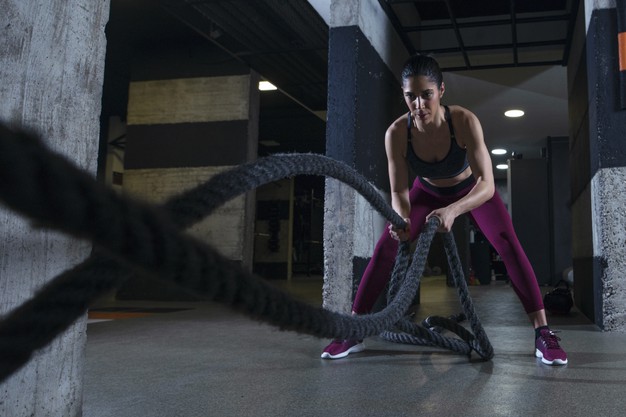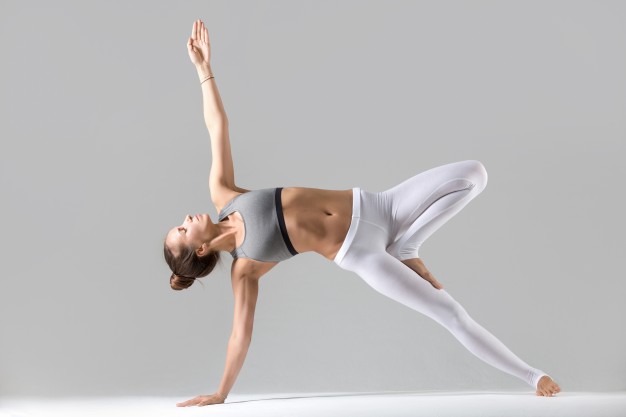Kapanlagi.com - Various components of physical fitness need to be known by everyone who wants to engage in physical exercise. Understanding these components can determine the goals to be achieved during physical fitness exercises.
Physical fitness is a form of physical exercise that is done to make the body healthier, fitter, and not too heavy to the point of exhaustion or fatigue. The benefits of physical fitness can be felt not only physically but also mentally. Physical fitness has various types of exercises that can be done by everyone to make their bodies healthier.
In physical fitness exercises, there are several components that need to be understood by everyone, whether beginners or professionals. These components of physical fitness can help determine the goals of the exercises, such as improving flexibility, muscle strength, endurance, or power.
So what are the components of physical fitness?
The components of physical fitness can be understood through the following explanations sourced from gurupenjaskes.com and krixluther.com. These components of physical fitness are complete with important explanations that need to be understood for physical exercises.
1. Components of Strength

(credit: freepik.com)
The first component of physical fitness is strength. Strength in physical fitness is related to the ability of muscles to withstand or bear loads during physical exercises or specific activities. Muscle strength includes arm muscles or leg muscles acquired through continuous training with heavy loads and low frequency. In this case, physical fitness exercises such as weightlifting are included in the strength component that trains arm muscle strength.
According to gurupenjaskes.com, some exercises to improve strength in physical fitness include sit-ups, back-ups, weightlifting, and push-ups. These exercises mostly train or improve arm muscle strength, leg muscles, and abdominal muscles.
2. Endurance Component

(credit: freepik.com)
The next component of physical fitness is endurance. Endurance is related to a person's ability to use the body's systems such as the heart, lungs, respiration, or blood circulation. This component of physical fitness is different from the strength component, which focuses on physical exercise with heavy loads. Instead, the physical exercise received uses a load that is not too heavy with a long frequency and requires a long time.
For example, physical fitness exercises such as running with a minimum distance of 2 km, running for a minimum of 12 minutes, lifting weights with a light but continuous and increasing amount, or running up and down stairs and hills.
3. Muscular Power Component

(credit: freepik.com)
Another component of physical fitness is related to muscular power. Muscle power is a person's ability to use maximum strength exerted in a very short time. Among the components of physical fitness related to muscle power are exercises such as vertical jump, front jump, and side jump. These physical exercises can train leg muscles.
4. Speed Component

(credit: freepik.com)
The next component of physical fitness is speed. Speed is one of the components of physical fitness that is related to the speed of the hands when throwing, hitting, or the speed of the legs when running. According to krixluther.com, speed is not only related to movement speed but also its acceleration.
For example, how fast you can initiate a movement and how long you can maintain that speed. In addition, speed also requires muscle endurance and strength as part of physical fitness.
5. Flexibility Component

(credit: freepik.com)
Another component of physical fitness is related to flexibility. Flexibility is the ability of the body, especially the joints, to move by stretching the body or having good range of motion. Flexibility can help the body prevent injuries that may occur, especially as age increases and joints tend to experience tension.
An example of this flexibility component is lunges, which help train and improve flexibility. Some types of yoga exercises can also help train body flexibility.
6. Agility Component

(credit: freepik.com)
The next physical fitness component is agility. Agility is the ability of a person to change positions from a certain area. For example, moving backwards and then returning to the front and so on. According to penjaskes.com, sports like badminton are related to body agility in physical training. In addition, some other examples of agility components include basketball and soccer.
7. Coordination Component
The physical fitness component is also related to coordination. In this case, coordination component is the ability of a person to perform physical activities or movements smoothly and combine several specific movement patterns. According to krixluther.com, martial arts can help improve coordination abilities by training strength, balance, and flexibility.
8. Balance Component
Balance or equilibrium is a person's ability to control their body while moving, so that they can maintain a good and proper posture. Balance is related to body control during movement and positions that require strength to maintain. One example of balance is standing on one tiptoe or certain gymnastic exercises. Being able to maintain balance for 1 minute with such examples can be considered as good body balance.
9. Accuracy Component

(credit: freepik.com)
Another component of physical fitness is accuracy. Accuracy is a person's ability to control the free movement of the body towards a specific target. For example, archery, bowling, or basketball require good accuracy to score points accurately on the target. To train accuracy, it usually requires high focus to hit the target precisely.
10. Reaction Component

(credit: freepik.com)
Reaction is the body's ability to act and respond to certain stimuli captured by the senses. In this case, reaction is included as a component of physical fitness that can enhance the body's ability to respond to specific stimuli during physical exercise. For example, in a game of catch, when the ball is thrown, the body will react to catch or even avoid it.
11. Body Weight Percentage Component
This component of physical fitness is related to body weight percentage or body composition. In this case, body composition such as the amount of fat mass, muscles, bones, and organs are closely related. For example, a gymnast has a slim body composition to facilitate their movements in the air when performing on the uneven bars.
So those are the 11 components of physical fitness complete with explanations, it is important to understand them for physical exercise. Some of these physical fitness components and their exercises can help the body become healthier and fitter.
(kpl/nlw)
Disclaimer: This translation from Bahasa Indonesia to English has been generated by Artificial Intelligence.




















